by Felix Flauta
Even if you haven't played Warmachine, its core Focus mechanic is pretty simple. A warcaster gets a set number of focus every turn, he portions it out among himself and his warjacks, and when each model activates they each use the Focus to do things. At the beginning of the next turn, all remaining focus goes away and the warcaster gets his set number of focus again.
The allocation of focus is the reason Warmachine is sometimes cited as having a "resource management" mechanic.
Hordes, Warmachine's sister game set in the same universe, uses what people call a "risk management" mechanic.
Objective
Warlocks SPEND Fury whereas Warbeasts GENERATE Fury.
Generating Fury
This is a force consisting of Chief Madrak Ironhide (center), two Troll Impalers (top and bottom right), and a Troll Axer (left):
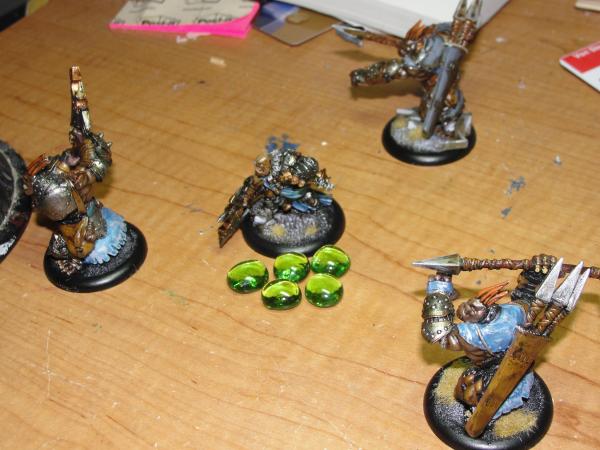
Madrak begins the game with 5 Fury (his maximum). The warbeasts, however, start with 0 Fury. Their maximum fury stats are 3 each, but at the start of the game they begin with nothing.
When the game begins, each model activates individually. So we'll start with the Impaler on the bottom right.

The Impaler on the bottom right activates. Because it's within 10" of Madrak (twice his Fury stat) and has full Spirit health, the Impaler is allowed to generate Fury up to its maximum. In this case, the Impaler chooses to use its ranged attack. Madrak forces the Impaler to boost its attack roll, giving it 1 Fury. Then when it hits, he forces it again to boost its damage roll, giving it a total of 2 Fury.
Warbeasts generate Fury in all the exact same instances a warcaster or warjack would spend Focus. You generate fury to boost rolls, to charge, and to buy melee attacks.
A Warbeast can even generate Fury in order to use their animus.
Let's activate the Axer next:
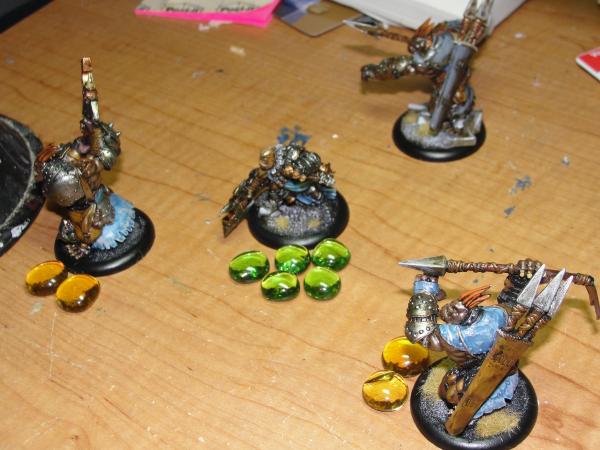
The Axer activates, and because it's within Madrak's control area (10") and has full Spirit health, the Axer is allowed to generate Fury up to its maximum. The Axer chooses to use its animus, Rush.
Every warbeast has an animus. In order to use the animus, the warbeast must be forced to generate Fury equivalent to the cost listed on the warbeast's card.
Rush costs two Fury. Thus, Madrak forces the Axer to generate two Fury in order for it to use its animus.
The last reason warbeasts generate Fury is to simply have more Fury for the warlock to use. This is called Riling a warbeast.
Let's activate that other Impaler:
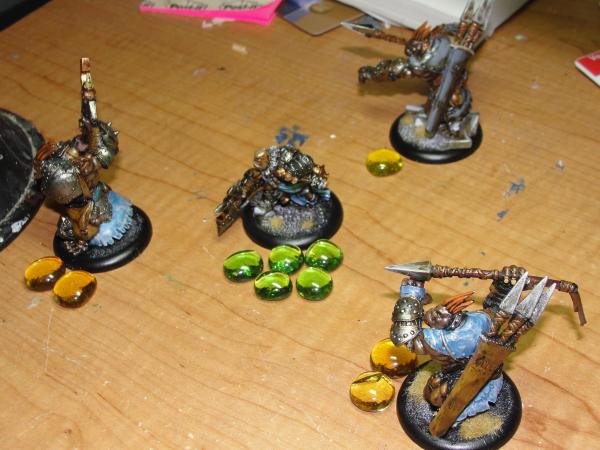
The Madrak player checks his Fury totals while activating the second Impaler. He sees that his warbeasts have four Fury total on the table, and Madrak can have a maximum of five. Because he wants five total Fury on the warbeasts, and because the Impaler meets all the conditions for being forced, Madrak Riles the Impaler, generating one Fury on the Impaler.
Warbeasts can be riled for any amount up to their maximum Fury.
Spending Fury
Now all that's left is to activate Madrak.
Madrak starts the turn with five Fury. In order to use his spells and boost his rolls, Madrak has to spend his Fury points.
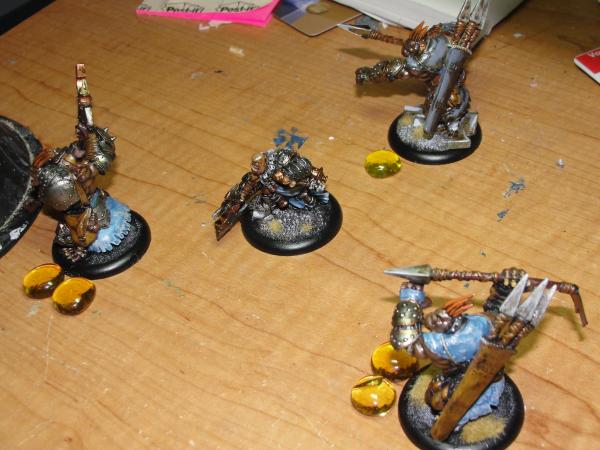
Madrak activates, throws his axe and spends one Fury to boost the attack roll and one more Fury to boost the damage roll. After that, Madrak spends three Fury to cast a spell, leaving him with no Fury at the end of his activation.
Regaining Fury
When Madrak's next turn comes up, he can only regain Fury by taking them from his warbeasts. This is why Madrak wanted five Fury on his warbeasts the previous turn.
In order to take Fury from his warbeasts, a warlock Leaches Fury from them.
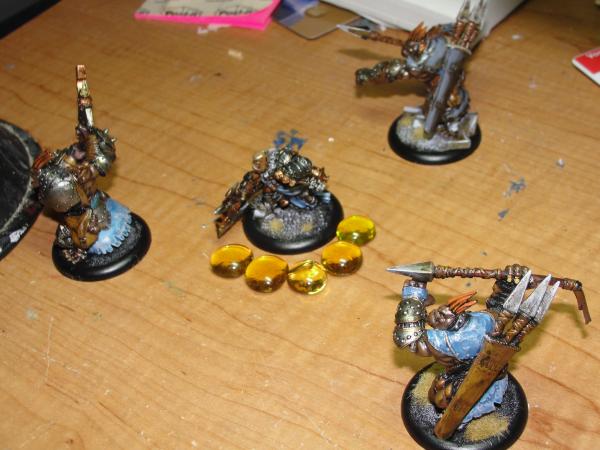
By keeping the warbeasts in his control area, Madrak is able to leach Fury from each of them. His warbeasts have five Fury, therefore Madrak can and does leach up to five Fury to begin his turn anew.
Risk Management
Fury becomes risk management when a warlock wants to overburden his warbeasts with as much Fury as they can handle. In the example above, Madrak only forced his warbeasts enough so that he could refill his Fury the next turn. However, imagine a situation where a warlock needs his warbeasts to use their full potential. Then you might have something like this:
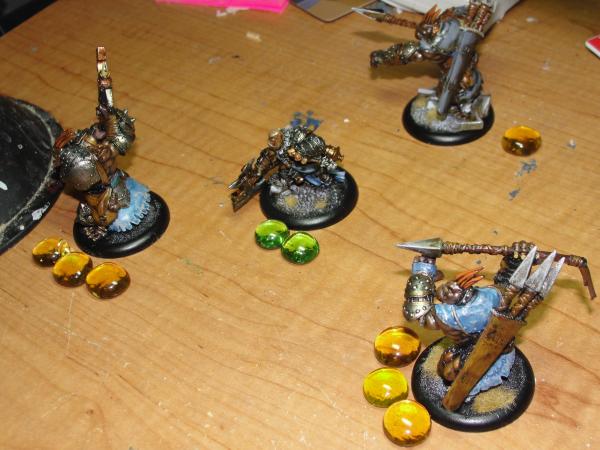
Madrak pushed one Impaler hard for three Fury, his Axer for three Fury, and his other Impaler for only one Fury. The warbeasts have a total of seven Fury between them. Madrak, however, ended his turn with two Fury points remaining. This is going to be a problem.
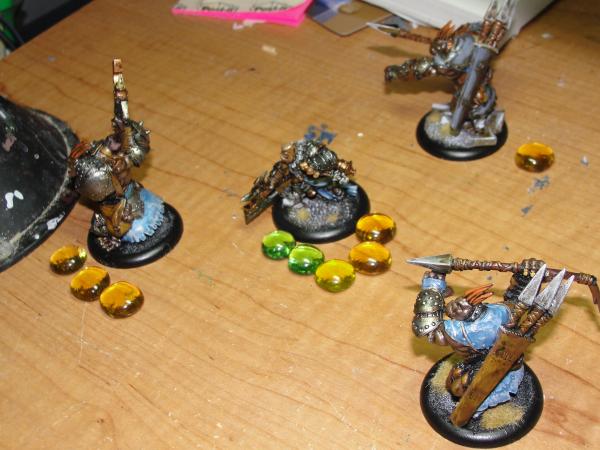
Madrak leaches all three Fury from the bottom Impaler, filling up his Fury total to five. After he does this, he can no longer leach anymore Fury from his warbeasts.
He also could have reached his total Fury in any combination of Leaches, too. He could have taken two from the Axer, and one from the Impaler,etc.
Any warbeast left with Fury after the warlock is done leaching has to take a Threshold Check. They roll two dice, add the total to the remaining Fury on the warbeast, and if they fail the warlock loses control and the warbeast attacks the nearest visible model, friendly or enemy, with boosted attack and damage rolls.
Now you can see why he left all that extra Fury on the Axer! If it frenzied, it would at least be facing the enemy!
Transferring Damage
The last use a Warlock has for Fury is transferring damage to his warbeasts. Consider the following scenario:
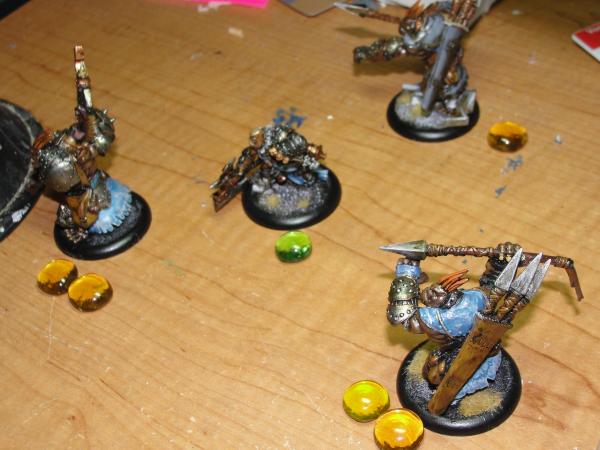
In this scenario, if Madrak were to take damage, he could spend a Fury point in order to transfer the damage to any of the warbeasts in his control area that isn't full on Fury.
And in the case of the example above, none of the warbeasts have full Fury. Madrak can transfer damage to any one of them that he chooses.